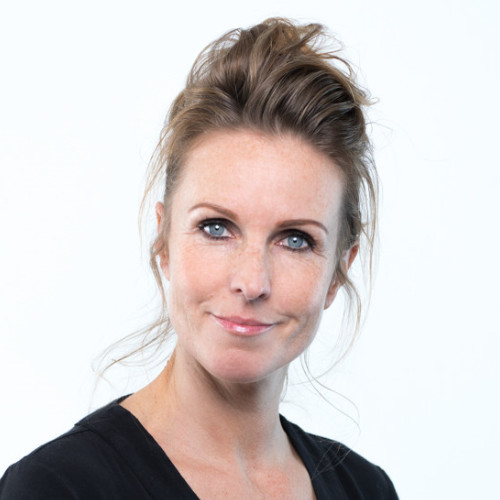Behind every digital transformation, there’s usually a solid, well-considered plan and matching strategy. Due to COVID-19 and the suddenly changing economy, many companies feel forced to digitize immediately. All of a sudden, everyone is expected to be able to work remotely. It requires much effort to make everything work digitally, straight away.
 Marcel de Vries, CTO, and founder of Xpirit, a subsidiary of Xebia, the Dutch Powerhouse in Amsterdam, say's, "We compare the current situation somewhat with swimming lessons. First, you carefully put your toe in the water to make sure it's not too cold, then suddenly you're pushed into the water, how well do you swim? The big question is, what is your reaction when you have recovered from the initial shock? Do you swim back to where you fell in, or do you adapt and swim in the direction of the new environment? If you give it some thought, swimming in the new direction turns out to be better than you ever expected!" According to de Vries.
Marcel de Vries, CTO, and founder of Xpirit, a subsidiary of Xebia, the Dutch Powerhouse in Amsterdam, say's, "We compare the current situation somewhat with swimming lessons. First, you carefully put your toe in the water to make sure it's not too cold, then suddenly you're pushed into the water, how well do you swim? The big question is, what is your reaction when you have recovered from the initial shock? Do you swim back to where you fell in, or do you adapt and swim in the direction of the new environment? If you give it some thought, swimming in the new direction turns out to be better than you ever expected!" According to de Vries.
Many companies have spontaneously accelerated into a digital transformation, with all employees forced to work from home. They may have had a digital transformation plan on their to-do-list but didn’t implement it. At moments like this, decisions reached in crisis mode. Which generally take weeks or even months, can have enormous, incalculable consequences.
“On one hand, you immediately start with digital collaboration. Think of using Zoom or Microsoft Teams. On the other hand, you face the challenge of applying remote engineering. Your engineers located throughout the country suddenly have to bring software to production with their teams. How do you do that when you are not near to a colleague? How do you do that when you need to depend on the development software in your company? How do you ensure that everyone can access it safely and still stay compliant?
Keeping their head above the water is currently a top priority for every company. In a crisis like this, essential issues as risk and compliance do not come first. In the past, you could easily take the time to look at all possibilities, and companies are now choosing business continuity. De Vries says: “It simply takes too long to carry out an extensive risk assessment. You need to immediately make sure that your entire business does not come to a halt. You will solve problems later! That is a logical choice if you are in crisis management mode.”
"Due to the current situation, there is also more leeway for temporary solutions. It makes everything more fluid, after which you can still do the remediation to fix it. Adjust afterward and see what you should have done differently or better. That's exactly the right mode for companies. Work-based on feedback and adjust! We instructed companies to implement this model before the crisis. It can still help them now be more efficient. We know what it means to do a digital transformation. We have been doing this for the past five years. We know what's involved. Let us help you optimize your current state and help you accelerate. After all, you are now in the water, so let us teach you how to swim the fastest and smartest. That is what we do, and instead of planning for it, we now can help you act on it right away."
The IT Consultant as a lifeguard
According to de Vries, executing a so-called forced digital transformation is a blessing in disguise. "Many companies had cold feet for the transformation but are now thrown into the deep at once, where they have to learn to swim immediately, so they're forced to deploy their digital transformations faster. Now that you're in the water, it is instrumental that you learn how to swim more efficiently or how to last longer if you swim in a different direction. We have known the pool for a while..."
"We often encounter resistance and cold feet at companies; at some point, you sometimes feel like giving them a push. But of course, that would not be appreciated."
Above all, companies should not think that they are already there and absolutely should not go back to the 'old' way. "You are already in the pool. Go for a swim and keep your head above water. Please take advantage of it and start seeing it as an opportunity. If you go back to the old way, all the pressure and misery has been a waste of time. At banks and insurance companies, we see that the new way is working. Some of them already plan to downsize their offices. Embrace what is good and only throw away what does not work. Otherwise, there are many missed opportunities. You also see change-oriented organizations. They are moving ahead and taking advantage of what is currently happening. These are the companies that emerge as digital winners. Those are the organizations that say; it will never be as before. It is wiser to go ahead and win the race. We are now swimming anyway, so let's aim to be first across the pool."
“Our consultants enjoy entering this phase. Beyond the resistance. You feel and experience the pain at the moment, and you have to take advantage of that.”
Cost-saving, more safety, better compliance, and cooperation; remote engineering
Many companies that have now taken the first deep dive into digitization are currently confronted with high, unnecessary costs and do not yet work efficiently. Their current implementations are not designed to be compliant and still have a high risk of not being implemented safely. The number of cybersecurity attacks is currently unprecedented. It creates enormous problems in the future that must be repaired. “Before data is out on the street, it is better to assess and adapt fast.
There are also many smarter ways to optimize collaboration. It would be best if you adapted to the model of the high performing IT organization, working in value streams, according to DevOps. Secure and compliant by default.” Says de Vries.
The costs for a digital transformation quickly recouped.
Especially when you first start helping with the cost side of a company. “Everyone will be confronted with high digitization costs in the coming months. We can often quickly provide insights on what can be done much cheaper and more efficiently. Our Cloud assessment e.g., provides you with advice on where you can save costs and which investments you can or should make to earn back even more in the long term.”
The choice for a digital transformation depends on which angle one comes.
De Vries says: “Is the goal cost optimization? Then we can do a scan, looking at how you set up Cloud subscriptions, what your cloud spend is, and how cloud native your software architecture currently is. Based on this, we can advise you on the measures to take that save costs. For example, by adjusting your architecture, optimizing functionality, and using the technology already there, we can make smart changes to your software so that you can adopt native cloud functionalities and no longer have to choose for expensive options. Think about setting up more efficient plans for your virtual machines or making some software that utilizes the serverless capabilities of the cloud. In the cloud, you pay per use. That’s different compared to the billing you have been used to form your datacenter or hosting provider. We can also show you exactly when you have recouped the investment. Architectural changes can often be recouped in 3 months or half a year, depending on the size, of course.”
"When it comes to collaboration, DevOps, and remote engineering, you need to look at how teams can work together more effectively and efficiently.
If you are adopting DevOps tools like Azure DevOps or Github as a service, it would be best to make your teams work smarter together. Smart collaboration and ease of CI / CD setups are a few examples. It's the crucial moment you can embrace DevOps principles. You will significantly increase your efficiency by actually doing continuous deployment and bringing your software to production several times a day."
"Everything is going remote; there is no reason to be in the office. Unfortunately, that is sometimes still in the minds of people. Fortunately, we can do Everything remotely."
"Where one normally has a software development team in an office, these developers now work from home. It is shifting from local engineering to remote engineering. Offering many opportunities, overlooked with an office mindset. You can now have a larger talent pool you can draw from since locality is not an issue. You can develop software 24/7 at lower labor costs. Azure DevOps, GitHub, Visual Studio Online, and Azure Cloud are useful services to support that. With this technology, you can work worldwide. "The tooling for remote engineering is simply available, but unfortunately, it is still not mainstream for many companies. Today, hosting your software development tools yourself is not efficient and productive anymore. Just purchase the already available SaaS product, then you don't have to manage the infrastructure anymore yourself, and you can use that time to create value for your customers." say's de Vries.
Xpirit has been successful in setting up and guiding companies towards the Cloud for more than five years.
They have gained a lot of knowledge and experience in the field of what does and does not work and learned a lot from it. By learning from mistakes, they can protect customers from this. “Everyone has the right to make their own mistakes, but sometimes it is beneficial to know what you will encounter in advance. The choice is yours. Do you want to experience it first before you run into it, or do you learn it from someone else?”
Xpirit is ideally suited to help with the knowledge injection you need now. They do not pull it out of your hands, which creates a dependency, but come to help with the knowledge that is now needed to immediately start working faster and more efficiently, after which your teams can all 'swim themselves'. Say's De Vries: "Instead of taking everyone out of the water, we will teach your team how to swim best in this pool. Because of the experience we have gained over the years at banks, insurance companies, and ISVs, we have gathered quite some insights into what works and what doesn't. e.g., the compliance requirements and laws that come up every time. We now know how to set up Azure in such an environment, compliant with requirements, such as SOC 2 Type II, Cobit, ISO and SOX, etc. We even made standard solutions for it."
Adopt & Embrace
"Where are you now? Look back and decide what you want to keep and what you want to throw away. Don't go back to what was. The only way is forward. It's your chance. Go for it. With our knowledge and expertise, we are happy to help you look retrospectively at how the transformation has been for you thus far and where the opportunities are for you. Companies that say we want to, adopt and embrace, are the digital winners of the future", says de Vries.






